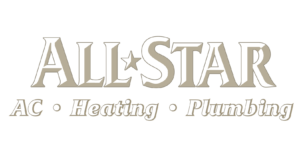How Homeowners Can Improve Their Indoor Air Quality
The US housing market has several features that are admired around the world, and the first on that list is, drum roll, please . . . air conditioning. Cultures have found ways to sufficiently heat homes in extremely cold climates, but most homes in hot climates rely on open windows/doors and cool breezes supplemented by electric fans. Our homes are not only more comfortable but being able to close doors and windows makes our homes much safer. This keeps out rodents, insects, and airborne hazards while keeping out precipitation and heavy winds as well.
Keeping our homes closed has a side effect; the airborne particles on the inside can concentrate and produce very poor indoor air quality. For this reason, the air conditioner is part of a larger heating, ventilation, and air conditioning (HVAC) system. The whole system works to clean the indoor air. Following the air through an HVAC system can help in understanding how to ensure the best indoor air possible.
Indoor Air Quality Tip 1: Return Air Plenum
A blower motor pushes air into the home and, at the same time, pulls air from every level of the home. The motor is quite strong, drawing the entire volume of the home about every two minutes of a heating or cooling cycle through the return air ducts.
Indoor Air Quality Tip 2: Air Filter
The air then moves very quickly through an air filter that will remove a large percentage of the airborne pollutants. But all air filters are not created equal. Air conditioning engineers designed an efficiency rating for air filters to assist consumers with air filter purchases. The MERV rating measures the percentage of particles of a certain size collected by the filter. Ratings look something like this:
- MERV 1–4 filters: Basic filtration, low cost
- MERV 6–8 filters: Good filtration, typically used in residential settings
- MERV 9–12 filters: Relatively high efficiency, can trap particles of 1 micron or larger
MERV ratings go up to 20, but filters above MERV 11 or 12 restrict airflow circulating through the system. These filters are used in laboratories, hospitals, and medical facilities, with enhanced air handler systems.
Eighty to 93 percent of airborne particles are captured by the air filter, which is a success. However, the particles will soon cover the filter, clog it, and restrict airflow. Prepare to replace the air filter every three months to avoid clogging the filter.
Indoor Air Quality Tip 3: Evaporator Chamber
The next stop is called the evaporator chamber, the place where the air is cooled or heated, depending on the time of year. Some dust and pollen make it through the filter, which is a problem. During the cooling season, the interior of this chamber is wet with condensation from the moisture in the air.
Other areas also collect dust and pollen, and for this reason, an HVAC system requires annual maintenance to ensure quality indoor air.
Indoor Air Quality Tip 4: Pushed Into the Home
The motor that drew air into the system now pushes the same volume of air out through a network of supply vents. This constant circulation of air keeps it fresh and clean, but when the air ceases to cycle, heavier-than-air particles will fall while inside the ducts. This happens in both return air and supply ducts, meaning they must be cleaned occasionally.
Gravity also causes dust and pollen to fall onto every surface inside the home, not a surprise to anyone responsible for household cleaning. But this phenomenon is a good thing since dusting, vacuuming, and mopping are collecting and removing particles from the home forever.
Following the airflow through the HVAC system identifies several steps homeowners can take to improve indoor air quality.
Contact the Indoor Air Quality experts!
Let All Star A/C & Heating Services help with your Indoor Air Quality needs. We have a seasoned team of HVAC contractors who will inspect, clean, and make suggestions on any repairs needed to keep you and your family safe with the highest indoor air quality.













